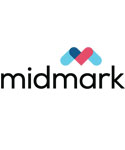2020 AAHA Anesthesia and Monitoring Guidelines for Dogs and Cats
Now available: Step-by-Step Anesthetic Safety
This RACE-approved web conference based on the 2020 AAHA Anesthesia and Monitoring Guidelines for Dogs and Cats covers the continuum of anesthetic care, with a focus on staff training.
For a printable PDF, click here.
Abstract
Risk for complications and even death is inherent to anesthesia. However, the use of guidelines, checklists, and training can decrease the risk of anesthesia-related adverse events. These tools should be used not only during the time the patient is unconscious but also before and after this phase. The framework for safe anesthesia delivered as a continuum of care from home to hospital and back to home is presented in these guidelines. The critical importance of client communication and staff training have been highlighted. The role of perioperative analgesia, anxiolytics, and proper handling of fractious/fearful/aggressive patients as components of anesthetic safety are stressed. Anesthesia equipment selection and care is detailed. The objective of these guidelines is to make the anesthesia period as safe as possible for dogs and cats while providing a practical framework for delivering anesthesia care. To meet this goal, tables, figures, and “tip” boxes with critical information are included in the manuscript and an in-depth online resource center is available at aaha.org/anesthesia. (J Am Anim Hosp Assoc 2020; 56:---–---. DOI 10.5326/JAAHA-MS-7055)
Introduction
The statement “there are no safe anesthetic agents, there are no safe anesthetic procedures, there are only safe anesthetists” should be the dictum for the entire anesthetic process in every practice.1 The anesthesia team has the crucial role of identifying patient comorbidities and procedure risks and minimizing the detrimental effects of perioperative pain and stress in order to provide safe and efficacious anesthesia for each patient. In addition, “anesthesia” is not limited to the period when the patient is unconscious but is a continuum of care that begins before the patient leaves home and ends when the patient is returned home with appropriate physiologic function and absent or minimal pain levels. At home, the continuum begins with the pet owner administering prophylactic drugs like analgesics and anxiolytics as well as fasting the pet. In the hospital, the anesthesia continuum includes all of the following four phases of anesthesia: preanesthesia, induction, maintenance, and recovery. Anesthesia starts with a preanesthetic evaluation and stabilization (if necessary) of the patient, preparation of all of the anesthetic equipment, and selection of appropriate drugs with precise calculation of drug dosages for all phases of anesthesia. Induction and careful intubation followed by intraoperative monitoring and physiologic support in the maintenance phase are the next steps, with continued monitoring and support into the recovery phase. Postanesthesia care, as communicated by the veterinary staff with the pet owner in the clinic and at home, completes the continuum. Provision of analgesia and client/staff communication and education are critical throughout the entire process.
The objective of these guidelines is to make the anesthesia period as safe as possible for dogs and cats while providing a practical framework for delivering anesthesia care before, during, and after the anesthetic procedure. The guidelines are intended to be comprehensive but neither all-inclusive nor a single source for information and clinical recommendations. More detailed references are available for pain management2 and cat-specific anesthetic and analgesic needs,3 and academic anesthesia textbooks address disease-, breed-, and procedure-specific anesthesia recommendations and outcomes. However, the guidelines are designed to be as actionable as possible. With that in mind, readers will find the guidelines’ visual components to be particularly useful. Figures, “tips” boxes, and tables provide quick access to the essential resources and methods associated with anesthesia.
Correspondence: [email protected]
*These guidelines are supported by generous educational grants from IDEXX Laboratories, Inc., Midmark, and Zoetis Petcare. They were subjected to a formal peer-review process.
These guidelines were prepared by a Task Force of experts convened by the American Animal Hospital Association. This document is intended as a guideline only, not an AAHA standard of care. These guidelines and recommendations should not be construed as dictating an exclusive protocol, course of treatment, or procedure. Variations in practice may be warranted based on the needs of the individual patient, resources, and limitations unique to each individual practice setting. Evidence-based support for specific recommendations has been cited whenever possible and appropriate.
Other recommendations are based on practical clinical experience and a consensus of expert opinion. Further research is needed to document some of these recommendations. Because each case is different, veterinarians must base their decisions on the best available scientific evidence in conjunction with their own knowledge and experience.
Note: When selecting products, veterinarians have a choice among those formulated for humans and those developed and approved by veterinary use. Manufacturers of veterinary-specific products spend resources to have their products reviewed and approved by the FDA for canine or feline use. These products are specifically designed and formulated for dogs and cats and have benefits for their use; they are not human generic products. AAHA suggests that veterinary professionals make every effort to use veterinary FDA-approved products and base their inventory-purchasing decisions on what product is most beneficial to the patient.
AAFP (American Association of Feline Practitioners); ASA (American Society of Anesthesiologists); BP (blood pressure); CRI (continuous rate infusion); ECG (electrocardiogram); ETCO2 (end-tidal carbon dioxide); ETT (endotracheal tube); GER (gastroesophageal reflux); HR (heart rate); IM (intramuscular); NSAID (nonsteroidal anti-inflammatory drug); NRC (non rebreathing circuit); PPV (positive pressure ventilation); RC (rebreathing circuit); RR (respiratory rate); SpO2 (percentage of hemoglobin saturated with oxygen)
IMPORTANT: The authors, reviewers, and editors of the material in the 2020 AAHA Anesthesia and Monitoring Guidelines for Dogs and Cats have made extensive efforts to ensure that treatments, drugs, and dosage regimens are accurate and conform to the standards accepted at the time of publication. However, constant changes in information resulting from continuing research and clinical experience, reasonable differences in opinions among experts, unique aspects of individual clinical situations, and the possibility of human error in preparing such an extensive text require that the veterinarian exercise individual judgment when making a clinical decision and, if necessary, consult and compare information from other sources. In particular, the veterinarian is advised to check the drug’s product insert before prescribing or administering it, especially if the drug is unfamiliar or is used infrequently.





